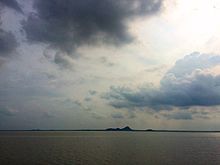Karimnagar is a city and District Headquarters in the Indian state of Telangana. Karimnagar is a major urban agglomeration and fifth largest City in the state. It is governed by Municipal corporation and is the headquarters of the Karimnagar district It is situated on the banks of Manair River, which is a tributary of the Godavari River.It is the third largest and fastest growing urban settlement in the state, according to 2011 census. It has registered a population growth rate of 45.46% and 38.87% respectively over the past two decades between 1991 and 2011, which is highest growth rate among major cities of Telangana. It serves as a major educational and health hub for the northern districts of Telangana. It is a major business center and widely known for Granite and Agro-based industries. It is also called “City of Granites”
It has been selected as one of the hundred Indian cities to be developed as a smart city under PM Narendra Modi’s flagship Smart Cities Mission by replacing Hyderabad based on the request from the Chief Minister of Telangana K. Chandrashekar Rao.
Etymology
During the Nizam era, the name Karimnagar was named for a village by an Elgandala Qiladar, Syed Karimuddin.
History
Satavahana dynasty
Kotilingala now in Jagtial district was the first capital of the Satavahana Kingdom (230 BCE–220 CE). Formerly known as Sabbinadu, inscriptions dating to the Kakatiya dynasty by kings Prola II and Prataparudra found at Karimnagar and Srisailam provide evidence of the area’s rich history.
Archaeological excavations in Pedda Bonkur, Dhulikatta and Kotilingalu show that the area was once ruled by the Satvahanas, Mauryas and Asaf Jahis.
Modern era
It became a district in 1905. It was previously part of princely Hyderabad State and then became part of Hyderabad state in 1948 after the Hyderabad state was annexed into the Indian Union. It then became part of Andhra Pradesh state on 1 November 1956 after merging the Telugu speaking region of Hyderabad state with Andhra state. After almost 6 decades of Telangana statehood movement, on 2 June 2014 it became part of newly formed state of Telangana by Andhra Pradesh Reorganisation Act, 2014.
Demographics
| hideKarimnagar UA population | |||
|---|---|---|---|
| Census | Population | %± | |
| 1901 | 5,752 |
—
|
|
| 1911 | 8,347 | 45.1% | |
| 1921 | 9,399 | 12.6% | |
| 1931 | 10,903 | 16.0% | |
| 1941 | 17,437 | 59.9% | |
| 1951 | 23,826 | 36.6% | |
| 1961 | 31,554 | 32.4% | |
| 1971 | 48,918 | 55.0% | |
| 1981 | 86,125 | 76.1% | |
| 1991 | 148,583 | 72.5% | |
| 2001 | 218,302 | 46.9% | |
| 2011 | 297,447 | 36.3% | |
| Sources: | |||
Karimnagar has a population of 297,447 within its corporation limits, according to 2011 census, making it the fourth largest city in Telangana state. Karimnagar Urban Agglomeration comprising Municipal Corporation and Urban Development authority of 489,985.City out growths include Bommakal (with a population of 9,031), Arepalle (6,987), Alugunur (6,164), Chinthakunta (3,437) and Sitharampur (3,017). Besides these outgrowths, there are many sub-urban areas on the outskirts, which are merged into corporation limits. It is the most densely populated city in Telangana, with a density of 11,114 persons per km2.
Karimnagar city has a literacy rate of 85.82%, which is highest urban literacy rate in Telangana state. Karimnagar urban agglomeration has a literacy rate of 84.93% which is almost equal to the National Urban average of 85%. The literacy rate for males and females for Karimnagar urban region stood at 91.06% and 78.69% respectively.
Climate

Dense Clouds over LMD Reservoir at Karimnagar
Karimnagar experiences dry inland climatic conditions with hot summers and cool winters. The city of Karimnagar gets most of its rainfall from the Southwest monsoon. The summer season is extremely hot, but temperatures decline with the onset of the monsoons, and the winter season is generally cool. The most popular tourist season is from November to February.
The summer season starts in March and can continue through early June. During this period temperatures range from a minimum of 27 °C to a maximum of 39 °C. The highest recorded temperature in the area is around 48 °C. Nights are much cooler, and the humidity is around 50%. October and November experiences increased rainfall from the Northeast monsoon. During this time, daytime temperatures average around 30 °C. The winter season starts in December and lasts through February. During this time, temperatures range from a minimum of 20 °C to a maximum of 35 °C.
| hideClimate data for Karimnagar | |||||||||||||
|---|---|---|---|---|---|---|---|---|---|---|---|---|---|
| Month | Jan | Feb | Mar | Apr | May | Jun | Jul | Aug | Sep | Oct | Nov | Dec | Year |
| Average high °C (°F) | 31 (88) |
33 (91) |
37 (99) |
40 (104) |
|||||||||
